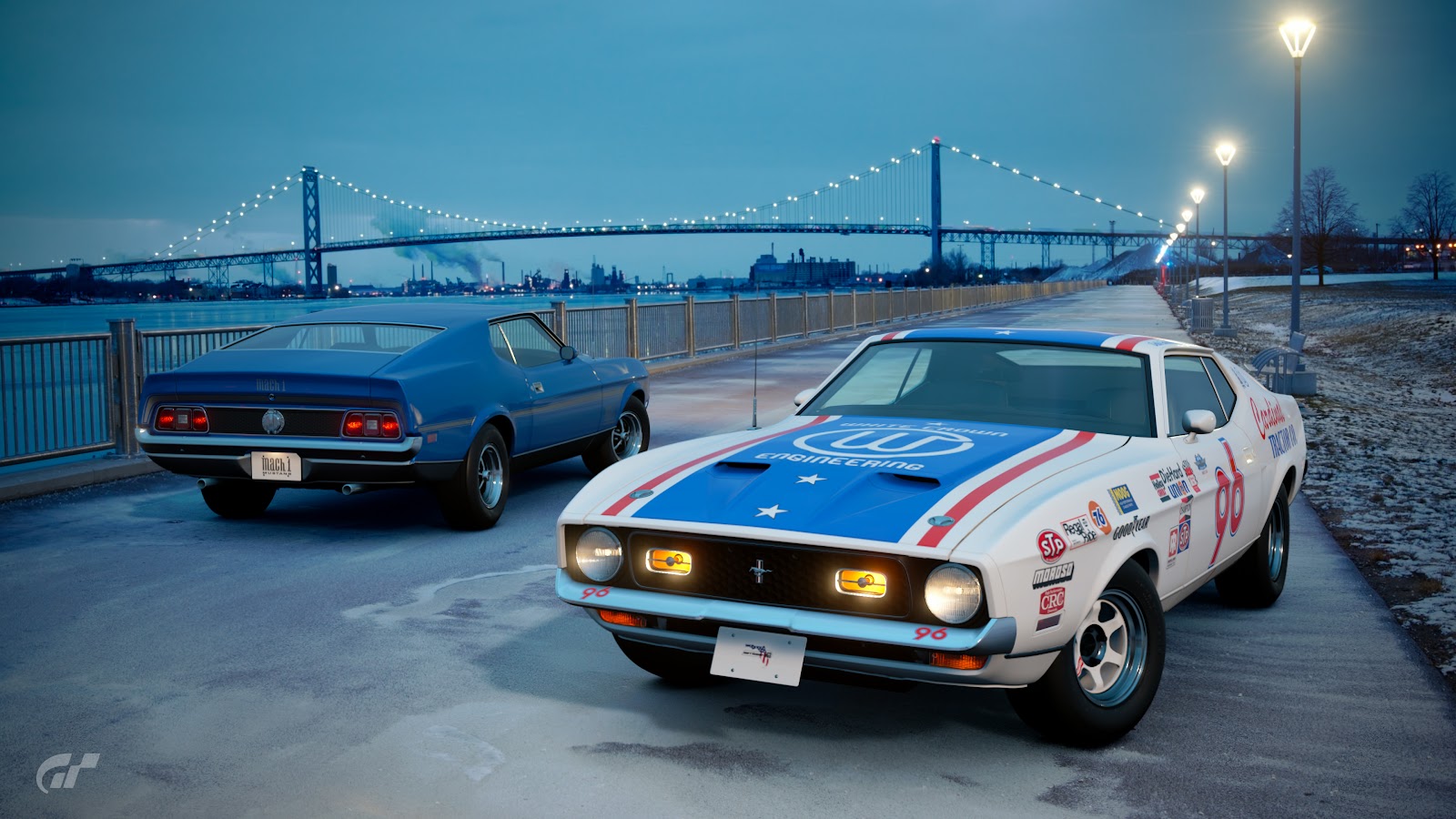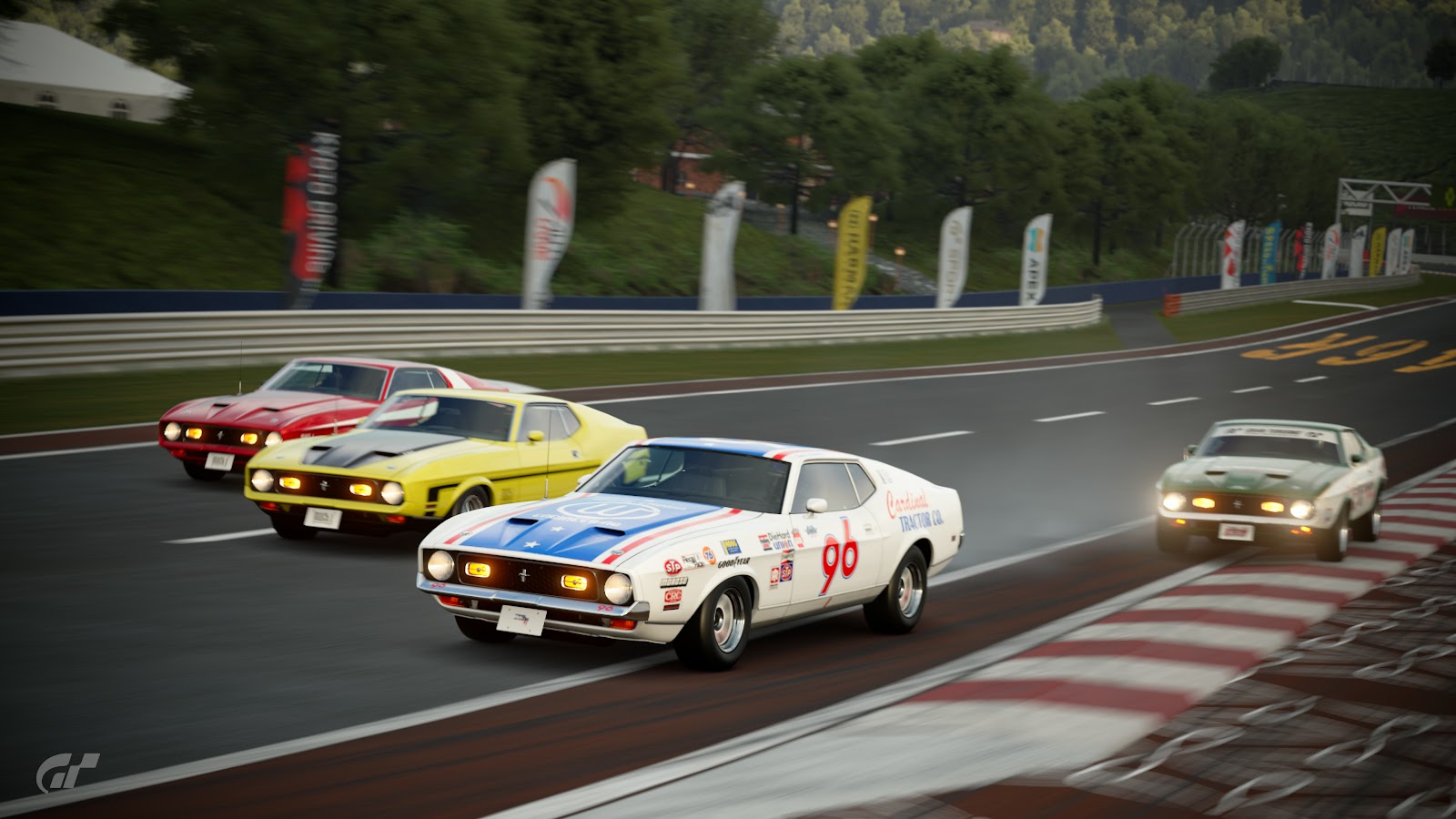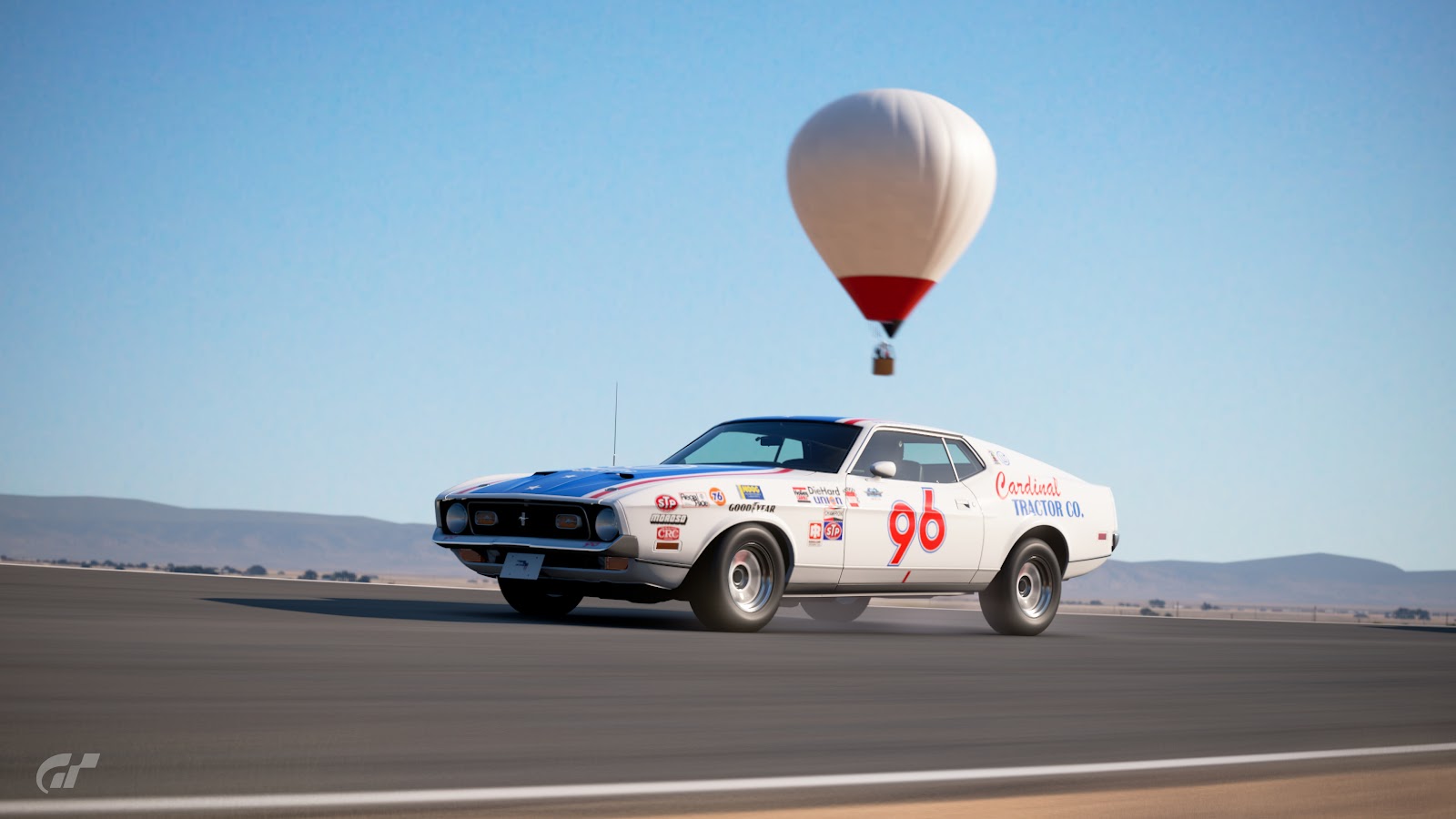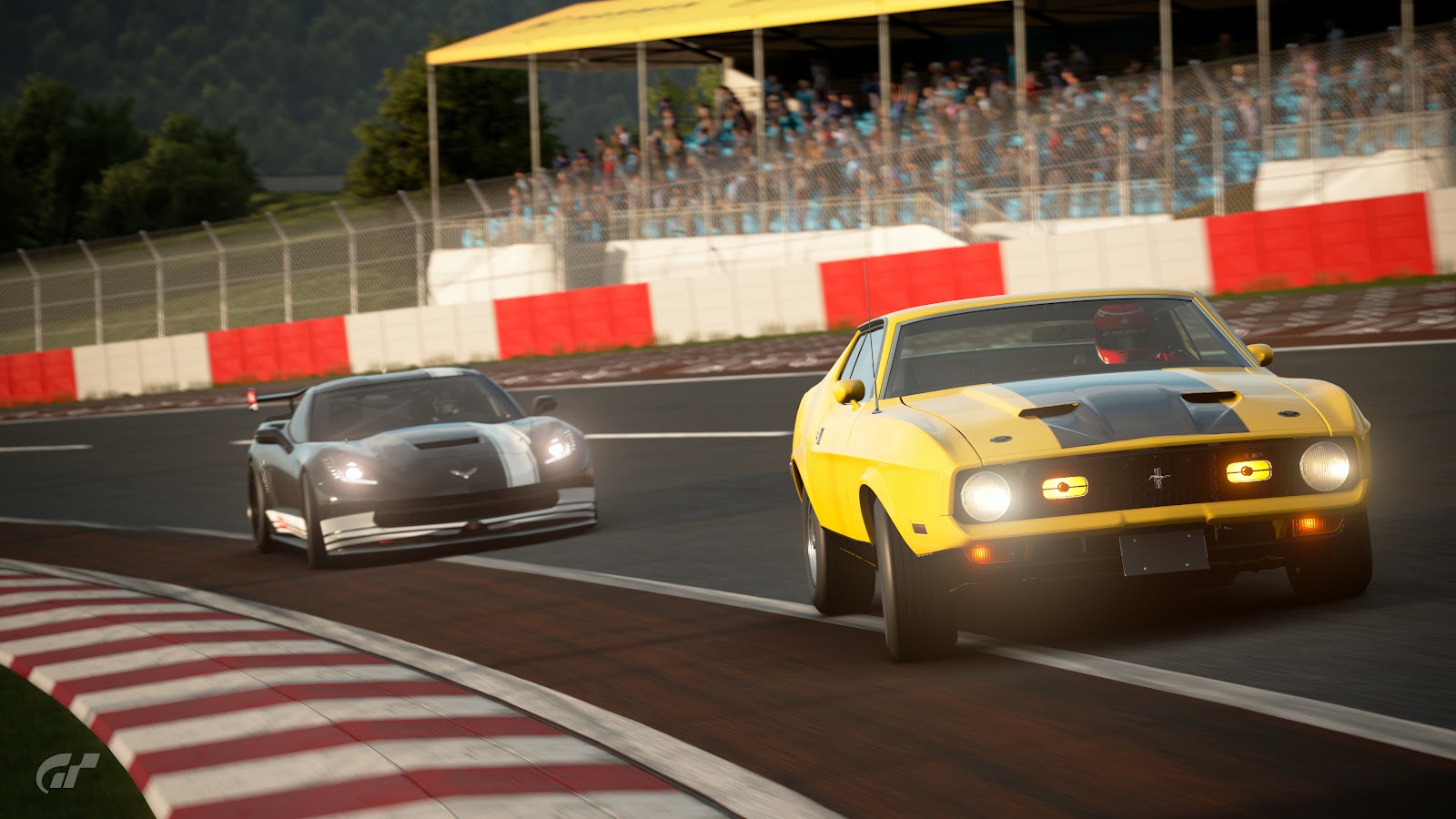So, this would be where you might be expecting a 1971 Mustang Mach 1 review, but I've a small confession to make: I was a slight bit distracted the past two weeks, and not just because I was bedridden by a nasty flu virus, either.
You see, we here at Car of the Week are finally moving on from Gran Turismo Sport to Gran Turismo 7 at the end of this month, and quite frankly, I'm lamenting the switch. The open lobbies that we host races with may finally be of acceptable quality in GT7, but it's still a downgrade from those of GTS'. Not to mention, as many threads may have already told you, the force feedback of GT7 is still sorely lacking, even in comparison to the dull and simplistic model in GTS. Many elite and even casual players don't seem to have issue with it, but I guess I'm in that unfortunate pocket wherein I'm good enough to notice, but not good enough to compensate for/ bypass and ignore it entirely. Whatever the case may be, the might as well be nonexistent FFB is something I'm personally struggling immensely to get to grips with, even with daily practice. After all, how do you practice for having less information? Slides in particular are impossible to feel coming, much less correct from, because I don't know if the front tyres have hooked up or not. As such, I don't even know if I'll be good enough a driver in GT7 to feel comfortable giving out opinions about cars, and I'm feeling extremely insecure about it. And I'm supposed to be the one running the whole damn show? Oof.
While not as egregious as the almost complete lack of FFB, the braking in GT7 feels odd to me as well. Stock cars with their OE brakes won't even lock their wheels on a dry, level road anymore, even if you slammed the brake pedal to the floor. To be fair, it's not as if the cars in GT7 stopped any better; they just seemingly have more longitudinal grip and weaker brakes. It makes the friction circle feel more like a friction oval, and it's so unintuitive to figure out where the limits of grip are if I slam the brakes and don't bring the front tyres to their limits, meaning I don't get a feel for where their limits are on braking zones into corners. Plus, it means that cars that have "personality stock" in how raw they are without aids like ABS, such as Vipers and AE86s, lose a lot of the challenge that defines their character, and that's just a bummer.
All told, I much prefer the driving feel of GTS. It's not perfect, but it's intuitive. Maybe the issues I've listed above will be adjusted in future patches of GT7, but I highly doubt they'll be addressed as they feel like intentional choices. It's been a few months since I've read of any physics or FFB adjustments in this year old game. Makes me think PD are happy with where the game is.
So, what in god's name does any of my old man waving a cane at the clouds have anything to do with the 1971 Mustang Mach 1 back here in GTS? Well, it's the third to last car (or fourth?) we're driving here in GTS COTW, and I'm very, very glad that I got to experience it before we leave GTS, because I don't think it'd be half as good to drive in GT7.
It's a classic muscle car, and so large, defining parts of its recipe have already been set in stone: It's cheap, packs a HUGE NA V8 up front with pathetic specific output figures, rear drive, a 4 speed gearbox that tops out at the quarter mile, and an equal thirst for fuel and blood. To expect anything even semi–decent from a recipe like this would be almost like expecting discount store rice balls to act as antidepressants, but lo and behold, Don Don Donki's rice balls give me some much needed justification for life's ceaseless suffering, and I might have fallen equally in love with the Mustang Mach 1 two weeks ago.
I'm not sure how common this feeling is among better adjusted people, but do you ever get the feeling of instant confidence when you take your first corner in a very good car at sane, pedestrian speeds, so much so that the car almost seems to be mocking you, chiding you for having the audacity to doubt it, all while making you feel like you're immediately missing out by not dancing with it at the bleeding edges of its traction? Over the course of the three years I've played pretend reviewer, I've felt this sensation maybe four times: in the 981 GT4 CS, E46 M3, the AE86 twins, and the R53 Cooper S. Then, out of nowhere, this 1,615kg (3,560lbs) clunker of a pony car suddenly ups and joins that list of elite cars just from me steering out of Big Willow's pit lane during race day, and thankfully, this promise of greatness is not one that can be faked; the car made good on that promise throughout the rest of race day.
It's a rather soft and heavy road car, and an antiquated one at that, so of course it moves about when subject to even mild gs. But, while I was expecting a Leaning Tower of Pisa stapled onto a floating island in the middle of a Tsunami levels of instability, what I got instead was a very well mannered and obedient race horse, one that is old fashioned, but measured in its movements and refined in its demeanour. It never once felt sloppy, or lashed out in a way I did not expect; everything it did, was because I told it to, from the brakes locking up to the car spinning out.
Braking for a corner in a '71 Mustang is, dare I say it, akin to braking for a corner in a modern Formula 1 car, wherein you have to initially fully stomp on the brake pedal at speed, and as the downforce bleeds off the car, you slowly ease off the brake pedal to account for that loss of grip on the tyres, lest you lock up the wheels. I'm not saying that a '71 Mustang has that kind of speed or any kind of downforce, but it does have disc brakes at all four corners, shocking for a muscle car from the '70s, and the braking technique in the pony car is not at all dissimilar to what I just described: full brake, and as the discs quickly find their bite on the bias ply shod steelies, ease off the pressure to prevent a lockup. The tyres are wonderfully communicative under braking, and I often find myself drawing very consistent skid marks with the inside tyre of a very slightly off neutral braking zone lap after lap, just to assure me that I'm right there at the bleeding edge of traction where the Mustang wants me
And hey, it's a classic muscle car, and so part of its charm is in the fear it instills in the driver, isn't it? Just because it's communicative and cooperative doesn't mean it's not scary; you still need to have your wits about you to survive a drive in the thing, but that's exactly what makes a drivers' car a drivers' car, isn't it? It's scary not in a "chased by a serial killer" kind of way, wherein there's no control over the situation, but rather, it's a "horror video game" kind of scary, wherein you intentionally scare yourself just for a controlled high; I'd even go as far as to argue that one hasn't truly lived if they hadn't experienced the self inflicted horror of going over the horrendously inconsistent braking zone into Laguna Seca's Corkscrew without ABS, going over blind crests and disruptive rumble strips, all while having to make minute steering adjustments while under hard braking. And if one hasn't truly lived without that experience, then I daresay that there's no other car I want to experience it with than the Mustang Mach 1, because it has just the right amount of speed to scare you, but at the same time, it also has impeccable communication and poise to never make the task feel unfair or unapproachable.
While you have to modulate the brake pedal just to prevent a lockup under braking, you'll have to be much, much more gentle with it when turning the car into a corner, because over stressing the front tyres doesn't cause them to simply give up in a puff of smoke; on the contrary, they will overwork themselves into flinging the nose of the car into the corner with enough furor to instantly swing out the similarly stressed rear tyres, and if you happen to be in the peaky powerband of the Cleveland 351 V8 engine when that happens, then you've got yourself a surprisingly potent drift car, all without the crutch of the handbrake! In a slide, the job of communicating to its driver transfers from the tyres to the steering wheel, with the steering wheel notably lightening up when grip is lost, the 7.0L NA V8 is more than willing and able in its powerband, and the car never being truly beyond the driver's control or intuition. While I've never found drifting intuitive in Gran Turismo games no matter the control scheme, the Mustang Mach 1 in GT Sport is a car that I seemingly subconsciously break sideways just so I can have the joy of proving to myself that I can not only hold a slide, but recover it as and when I want. It's just a car that makes me want to play endlessly against my better judgement!
As a whole then, the Mustang can be a scary car to drive quickly, but that's just due desserts for what I'd like to think is willfully playful driving. If you respect it and pay deep attention to how you handle it, the Mustang will very much reciprocate by being one of the most well behaved, communicative, and capable sports car—not just of its era, not just of its class, but of all the carefully curated list of enthusiast picks present in this game, including the likes of RX-7s, Integras, 911s, and Corvettes. It's a car that can be well–behaved when you want it to, and let down its mane when you ask it to at the drop of a riding helmet, and it's an extremely darling communicator no matter what you put it through. In other words, it ticks all the boxes of a great sports car.
Does it have its flaws? Oh, for sure. Its four speed gearbox tops out at a mere 182km/h (113mph) on a level road in clean air. Because of its low top speed, I often find myself trying to grab a fifth gear that isn't there, and when I got too used to camping at its limiter, I bounce off the 6,000rpm redline in third because I'm dumb. Its complete lack of top end does make even one–make races frustrating, as you can often smell the blood in the air from a competitor who messed up a corner ahead of you, but you'll only gain on them for a second or two before the both of you are topped out at the magical 182km/h, as though the Mustang was a 90s Japanese car, and if you're leading, you don't really get to extend the gap much with your sick skillz. Needless to say, against anything else with more top end and even comparable power, the Mustang is a dead horse in the water. It also has the thirstiest 302HP (225kW) I have ever seen in my life! It's not surprising, given that the peak power of its humongous 7.0L V8 lies just 500rpm away from redline, and the seemingly sawn–off gearbox of the car keeps the engine obsessively badgering its limiter. But hey, that just means that the car gets lighter that much faster over the course of a race, no? I call that a tactical disadvantage.
I'm aware that, in real life, the 1971 Mustang Mach 1 probably isn't anywhere near as sublime to drive as it is in the game. Its suspension is probably a lot more soggy, its steering rack might resemble a wet noodle more than a steering rack, its brakes most likely only work part time, and the car will most likely explode when the steering wheel is tilted more than 0.5 degrees to the right. Hell, I'm willing to bet it doesn't even have 200HP at the crank, given how Americans are so obsessed with gross horsepower at the time. But you know what? I went into this week with lower than zero expectations, and I walked away not only pleasantly surprised, but retroactively wanting more. Not that I could've known it two weeks ago, but the 1971 Mustang Mach 1 is all the sendoff I need for Gran Turismo Sport: it let me lock its brakes, it let me slide it around, and it'd even have let me have close knit battles with my friends if I found the balls to trust it during race day. None of that is currently possible with GT7, and I'm glad that I had to have this very, very special experience with the Mustang before we moved on from this game.













No comments:
Post a Comment